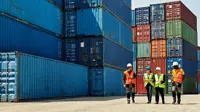Insights
We’ve gathered our insight and expertise into one knowledge base. Explore our advice, research, guides and reports to inform business decisions.

Insights
Data centre cost index 2024
Now in its eighth year, our report remains the construction industry’s only cost index specified to the data centre sector.

UK Procurement Act 2023: preparing for ‘go live’
The recent announcement to delay the date of the new UK procurement regulation gives the public sector additional time to prepare ahead of launch.

Canada market intelligence: mounting pressure
Our Canada market intelligence report provides market and provincial analysis for the region, as well as economic insights from our team of experts.

Data centre cost index 2024
Now in its eighth year, our report remains the construction industry’s only cost index specified to the data centre sector.

Digital-first procurement: opportunity and risk
Strategic digital-first procurement is key to de-risking supply chains, embedding resilience and delivering improved ESG outcomes.

UK market intelligence: inflation to inflection
Our Q3 2024 UK market intelligence report examines several procurement issues and the extent to which these challenges can be effectively mitigated.

Understanding the value of commercial specialism
We take a look at understanding the value of commercial specialism when it comes to commercial or delivery model requirements.

Optimising life sciences construction performance
An increasing portfolio of life sciences facilities are expected to be built at speed, despite vast increases in scale and complexity.

Singapore market intelligence: set for growth
Our Singapore market intelligence report provides insight into the country’s construction sector which is set for continued growth in 2024.

US market intelligence: slowing down
Our Q3 2024 US market intelligence report provides market and regional analysis for the region, as well as economic insights from our team of experts.

Australia and New Zealand market intelligence
Our report finds that ANZ’s construction markets are being supported by public sector investments, while private sector activity remains subdued.
Explore our publications

Data centre cost index 2024

International construction market survey 2024





